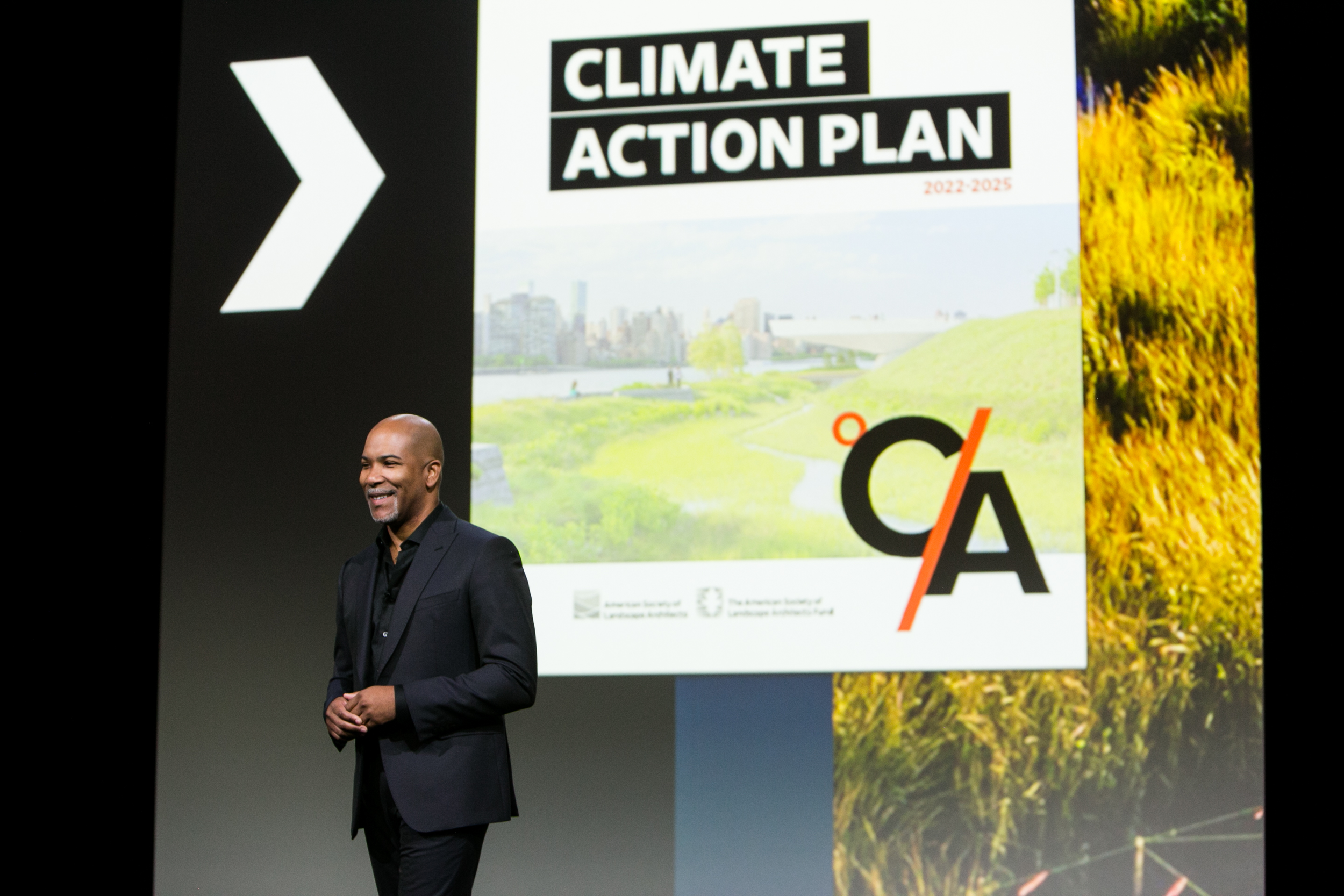Carbon Reductions for Organizations
Case Study: American Society of Landscape Architects
Many clients we work with focus on greenhouse gas emission reduction strategies at their events but could be missing out on implementing sustainable best practices within their own offices. This may be particularly true for associations that host membership events; when it comes to leading by example, many associations are now realizing their influence might be limited if they’re not demonstrating the sustainable way forward.
Daniel Foster, Analytics Manager at Honeycomb Strategies, sees the value in evaluating home base emissions as a way of influencing change at a larger scale: "By leading the way in implementing new policies yourself, you set an example that encourages others to follow." As a data expert, Daniel relies on the numbers to reveal a wealth of information about current operations and possible areas of improvements.
Whether it’s new policies, better data tracking, or complete overhauls, there are lots of ways to ensure your organization is walking the walk. Daniel walks us through a few practical steps to get started.
Where to Start
To begin understanding the carbon impact of your organization, first brainstorm a list of carbon emission categories that would apply to your organization. The most common categories are energy consumption, waste generation, employee commuting, business travel, and freight distribution, but there could be many others depending on your industry.
Then, establish a baseline: identify current practices and measure the carbon emissions of those actions. This step is essential because it will provide the benchmark against which you determine all along the way how successful you’ve been at reducing carbon emissions.
Armed with the information of your current impact, identify your reduction goals. Think realistically about what you can achieve, and when. Then sketch a road map that indicates the actions you need to take for a drawdown to occur.
Resources that Help
Education is a huge factor for operational change. Knowledge will inform each step of the way and be the key for buy-in from all affected parties. Look for newsletters, social channels, news outlets, books, trainings and classes that can increase your literacy on sustainability and carbon emissions in particular, then share them with your team. Increasing your organization’s knowledge bank on sustainability will empower and motivate everyone to participate in programmatic change.
Experts can help you determine goals and the steps you need to achieve them. Honeycomb Strategies provides a lot of resources to our clients such as policy templates, training programs, and step-by-step guides. It’s great to talk to carbon specialists, such as our partner Aclymate who educates about and provides responsible options for carbon offsets.
Tools of the Trade
It’s essential to work with reliable and useful tools that will help each step of the journey from baseline to net zero. Invest in a secure, intuitive data tracking system, like HIVE (Honeycomb Insights for Venues and Events) that stores aggregate data, updates in real time, and shows your progress graphically.
An expert consultant can also be an invaluable tool. Challenges can feel confusing and overwhelming, and an outside consultant’s advice can keep you on track. Whether you work with Honeycomb Strategies or someone else, make sure you’re receiving customized recommendations and data interpretations rather than boilerplate responses for maximum impact.
Case Study: ASLA
The American Society of Landscape Architects (ASLA) reached out to Honeycomb Strategies with a strong commitment to leading their industry by showing their members how to take steps toward measuring greenhouse gas emissions.
Honeycomb Strategies partnered with ASLA in 2022 to support both the annual Conference on Landscape Architecture and the organization’s internal operations. Although both projects began concurrently, ASLA chose to use 2023 as its operational baseline since most employees were still working remotely in 2022. ASLA had already published a Climate Action Plan for its members to guide their professional commitments to environmentally just action, and this collaboration represented the next step in demonstrating their leadership through measurable greenhouse gas emission reduction in its own operations.
ASLA launched a program to use HIVE to record and analyze the climate impacts of its operations, with a goal of zero emissions by 2040. We worked with them to identify all aspects of their business that would contribute to greenhouse gas emissions and set up mechanisms to gather data that was not previously tracked. This includes energy and waste data collection at its office building, member magazine production and distribution, and employee commuting and business travel.
“Honeycomb Strategies helped us look into every part of our business operations. Their analysis of our top emissions sources yielded some surprises for us. It also led to valuable companywide discussions and a smarter emissions reduction strategy,” said Jared Green, Hon. ASLA, senior manager of climate action at ASLA.
Honeycomb Strategies helped ASLA identify what categories were contributing the most to carbon emissions and how they could implement policies companywide that would not disrupt how they currently operate. In 2024, ASLA successfully reduced its carbon emissions by an impressive 20%, demonstrating that dedication and strategy pay off.
Making Decisions
Carbon reduction won’t magically happen on its own without changes in action. But change doesn’t have to be drastic to make an impact – you could see benefit from procuring new paper, switching up lunch catering, or reducing company travel. It all depends on what your goals are. Opportunities for reductions will start to show up once you have clear data, showing you choices for new avenues and actions.
Sometimes these decisions can be difficult, but having clearly identified priorities and goals – like ASLA – can help guide your organization through the decision-making process so the operational changes have staying power.
TALK TO OUR EXPERTS ABOUT CARBON REDUCTION FOR YOUR NEEDS



